Shark Bay, a World Heritage Area, is renowned for its pink snapper fishery.
In the 1990s, the first scientific assessments of pink snapper stocks in the area revealed they were being intensively overfished in the inner gulfs, mostly by recreational fishers. This triggered a major long-term recovery program, involving two decades of intensive scientific monitoring of the stocks and strong fishery management measures.
With the support of fishers and the WA community, stocks have now recovered as a result of the program and the recreational fishing rules have been modified to allow more fishers the opportunity to access this classic WA fishery.
This is the story behind the recovery.
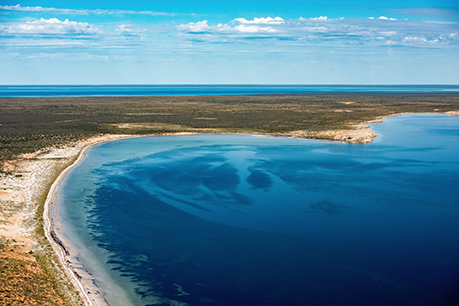
Shark Bay, a World Heritage Area, in all its wild beauty. Photo: Andrea Izzotti
The pink snapper of Shark Bay’s inner gulfs
Stocks of pink snapper in Denham Sound, Freycinet Estuary and the Eastern Gulf are genetically separate from each other and the wide-ranging ocean stock – this means they do not mix or interbreed with other pink snapper stocks.
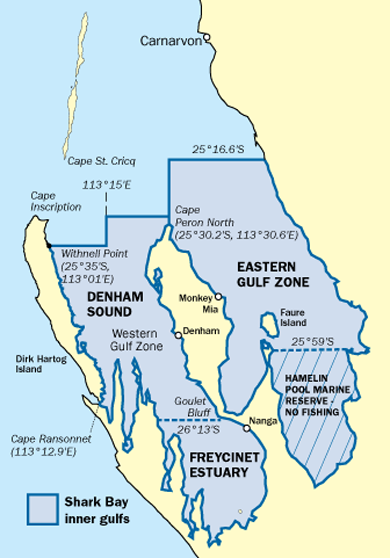
The Shark Bay pink snapper populations are also very small by comparison with ocean fisheries elsewhere in Australia and New Zealand, and the sustainable annual take from these stocks is tens of tonnes rather than hundreds or thousands.
Pink snapper are long-lived and slow growing. In the inner gulfs they take four to five years to reach maturity, but grow to very large sizes, reaching over a metre in length and 10 kilos in weight. Fish of this size can be more than 30 years old.
For these reasons, and given the area’s high conservation value, pink snapper stocks in Shark Bay require careful management.
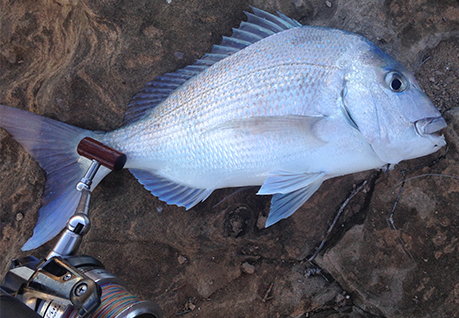
It's fish like this Freycinet Estuary pink snapper that make Shark Bay such
a popular recreational fishing destination.
Fishery on the brink
With increases in fishing technology and more accessible roads into Shark Bay the recreational fishing pink snapper catch from the inner gulfs rose from an estimated 40 tonnes of snapper in 1983 to an estimated 100-plus tonnes in 1995.
These catch levels were unsustainable, seriously threatening the future of the inner gulf pink snapper stocks.
By 1997, our scientific monitoring was showing that the Eastern Gulf pink snapper stock had collapsed: the spawning stock was down to less than 10 per cent of its estimated original size. There were signs that Freycinet Estuary and Denham Sound stocks were heading the same way. Urgent action was needed with a commitment to a long-term monitoring and management program to save the fishery.
Cutting edge science
Obtaining extensive, good quality scientific information was the key to developing a management plan that could recover the inner gulf stocks. Our researchers adopted the ‘daily egg production method’ to estimate the size of snapper breeding stocks. At peak spawning times, nets are used to collect plankton containing pink snapper eggs allowing researchers to estimate average pink snapper egg production in the area surveyed.
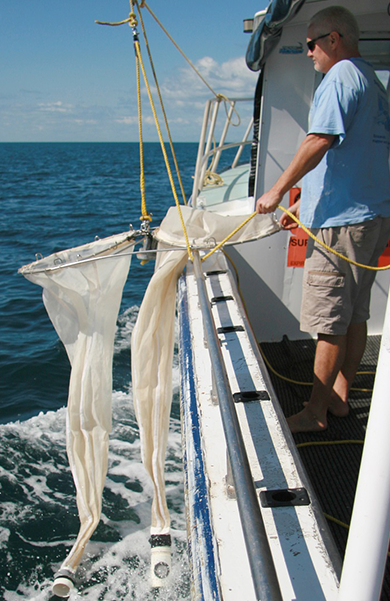
Using ‘bongo’ nets to collect pink snapper eggs as part of plankton
surveys in Shark Bay.
This is combined with information on spawning fish collected during the plankton surveys to estimate the total weight (biomass) of the spawning stock.
The fish samples are also used to provide age structure information on the pink snapper stocks. Combining all this information, our researchers can use mathematical models to estimate the pink snapper stocks’ size and determine their sustainability status.
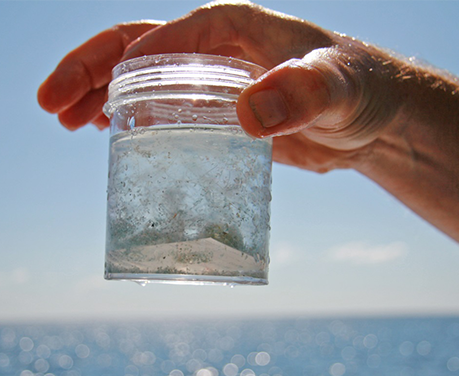
A sample jar containing pink snapper eggs collected in a plankton survey.
The steps to recovery
After commercial line-fishing for pink snapper was stopped in the inner gulfs in 1996, the recreational fishing rules were also changed including reduced recreational pink snapper daily bag limits, an increased minimum size limit and the introduction of a ‘slot limit’ (restricting fishers to only taking fish measuring between a minimum and a maximum size limit).
Protecting larger fish as well as the smaller fish was important because as they grow larger, females produce more eggs each year and become an increasingly valuable part of the breeding stock. Research has shown that a 40 centimetre female can release 100,000 eggs in a single spawning, while a larger fish of 70 centimetres can release 300,000 to 500,000 eggs at a time – which will add up to millions of eggs being produced over the entire season.
The Eastern Gulf was completely closed to fishing from 1998 to 2003 to allow the stock to rebuild and further changes were introduced in 2000, including a six-week closure during the fish's spawning season in Freycinet Estuary.
In 2002, a total allowable catch (TAC) was set for each pink snapper stock with recreational fishers allowed to take 75 per cent of the catch. This was the first time a TAC had been set in a mostly recreational fishery in Australia.
Spawning closures remained in place in the Eastern Gulf and Freycinet Estuary and, in the Freycinet Estuary, a tag system was introduced to limit the annual combined catch to below five tonnes a year. Recreational fishers required a special tag to take pink snapper in the gulf. A limited number of tags were available annually through a lottery; if successful, fishers could obtain two tags each calendar year entitling them to take two legal-size fish.
A community-backed recovery
The whole community has worked with us to help the inner gulfs’ pink snapper stocks recover and remain sustainable with a comprehensive management and education program playing a key role.
In 2002, prior to the re-opening of the Eastern Gulf snapper fishery, a community-based consultative group was formed to review the ongoing research, advise the Minister for Fisheries and develop management strategies to secure the future of the fishery. Comprised of representatives from local government, commercial fishers, charter operators, Recfishwest and local tourism, the group met every three years up until 2014 and once more in 2015.
With the support and cooperation of recreational and commercial fishers, catches have been kept within the set TACs since 2003 – another key factor in a strong recovery.
The recovery and its rewards
The three inner gulf pink snapper stocks have all now recovered to above the target levels agreed to when the recovery program was first developed. As a result, the Shark Bay pink snapper recreational fishing rules have been reviewed and modified with the 70 centimetre maximum size limit being dropped in early 2016 giving more fishers the opportunity the chance to take a ‘trophy pinkie’.
In addition, the Freycinet Estuary tag-based system has been replaced by a five-kilogram possession limit for finfish fillets, or one day’s bag limit of whole fish, in a newly designated Management Zone, which is being managed as a 'low-take' area.
This management approach is designed to provide high quality recreational fishing experiences in a ‘wild’ and unspoilt environment. The emphasis now is on enjoying catching and eating fresh fish.
Fish for the future in Shark Bay
The Shark Bay pink snapper recovery story is a great example of how sound fisheries management, based on high-quality scientific research can restore a valuable aquatic resource back to good health. It can, however, take time and often requires strong community support.
One of the principle values of the Shark Bay pink snapper resource is that it offers recreational fishers the opportunity to catch trophy-size fish in a unique setting. But that setting is what makes these stocks particularly vulnerable to overfishing.
That is why it is essential that we continue with our comprehensive monitoring program of the inner gulf pink snapper stocks. In addition, we continue to develop innovative new methods to assess catch rates in the inner gulfs to ensure the stocks will remain sustainable.
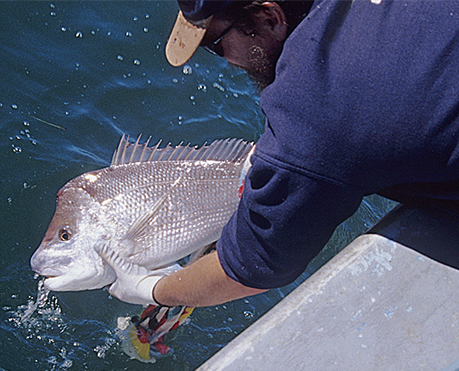
A pink snapper is returned to Shark Bay in excellent condition.